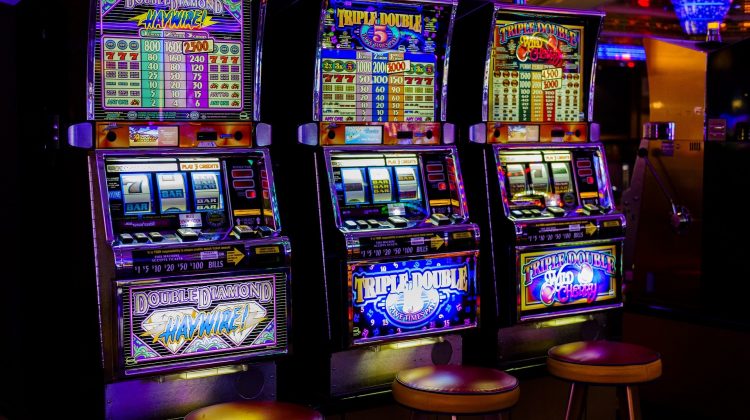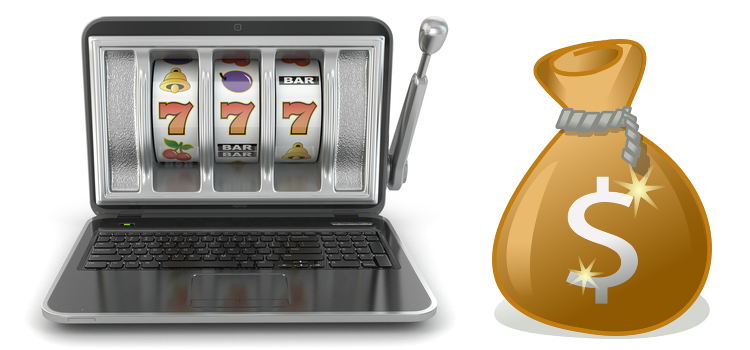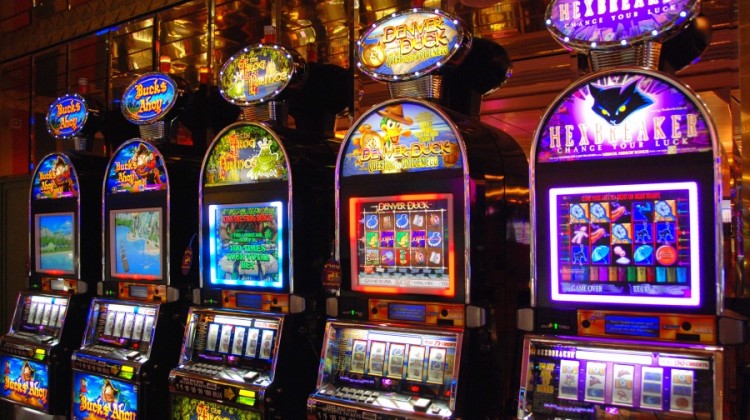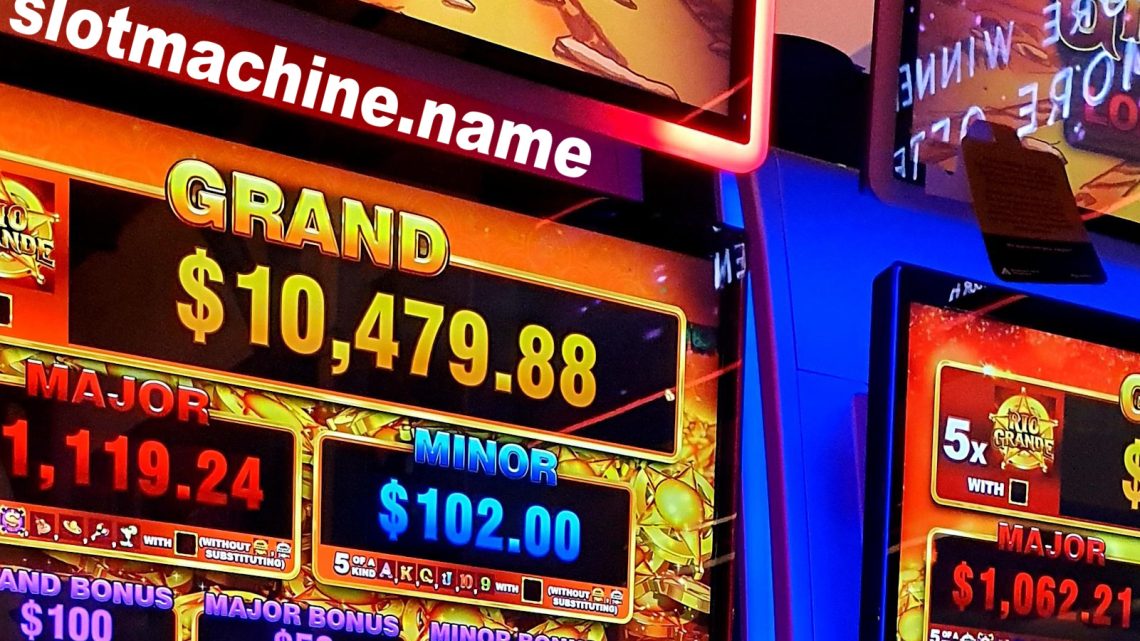Slot machines are everywhere in the casinos, and in the surrounding area. Some say the slots pay the casinos’ overhead. The ratio of slot machines to Blackjack tables is at least 30 to 1 in most casinos. Slot machines never call in sick, can’t stack the deck, and hold a bigger percentage for the house than Blackjack. Many gamblers everywhere are addicted to slot machines, dusting off thousands of their dollars each year. That’s because the slot is impersonal, no one is watching and critiquing, and no one knows how much the player loses. It’s a private matter between the gambler and the machine.
In the old days a slot machine was totally mechanical, coins were played one at a time, there was a single pay line, and you might hit a jackpot for a hundred coins. The player pulled a lever which stressed a spring, the energy in the spring was released to spin the reels, and at some random point a simple brake stopped each reel separately. Each reel was decorated with a different sequence of symbols, such as Cherries, Oranges, and Lemons, and the mechanism included a "gate" that forced the reel to stop with the symbols lined up with the windows. If three (or sometimes two) of the same symbol would align, the related mechanism would spit some specified number of coins.
That was then, but this is now, and almost all of today’s slot machines are electronic.
If you like variety, today’s slots have it. A player can dust his money on single paylines, multiple paylines, progressive slots, and games related to Poker, Blackjack, and Keno. Some video slots are played in the same manner as the real games they are based upon. The Poker slots are normally draw poker, and Blackjack slots are single deck.
In Nevada, one new type of slot machine is called Megabucks. These machines are electronically linked up with each other throughout the state of Nevada. The jackpot increases each time money is put into any of the machines. Multi-million dollar jackpots have been won off Mega-bucks, which is a Nevada variation on lottery.
Today’s slot machines have video screens, integrated circuits, silicon chips, microprocessors, pseudo-random number (PRN) generators, and electronic safeguarding. Modern electronic machines are hard to cheat because they benefit from decades of experience with cheaters, and any time a gimmick works the designers go back to the drawing board to eliminate that vulnerability. The outer housing stays the same, but the electronics and the programming can be changed very quickly.
In the old days, slot machines were simple to beat, perhaps because a cheater might have been simply taken outside and shot, and that wasn’t worth a $10 jackpot. Today’s slot machines, thanks in part to our courts and due process, include very sophisticated anti-theft measures. Every time the door is opened on a slot machine that fact is displayed at the slot control panel in the casino. If the slot mechanic is not working in that area of the casino, the slot supervisor instantly knows what’s going down and sends in a team of his own. Most of the old methods of cheating slots will not work with the new machines, which will shut down if any foreign object is inserted into the machine for purposes of manipulating interior components.
The casino’s slots advantage varies. On nickel machines the advantage ranges from 15 to 20 percent. On quarter machines it is from 8 to 12 percent, and on dollar machines is from 1 to 8 percent. The term "loose" indicates a machine that returns a high percentage of money put in. If a casino advertises "loose dollar slots that pay back 95 percent," then out of every 100 million dollars played the machines pay back almost exactly 95 million. This sounds pretty good until you realize that the most efficient way to play the slot is to go for the maximum bet. That’s 5 coins, or $5 on a dollar slot, per play. In an hour’s time you could put in $400 and should expect to lose about $45. That can add up fast if you’re hooked.
Some counterfeit coins work fine, even in new machines. They can be anything that is the correct size and weight, and they also must bounce correctly. The modulus of elasticity and the durometer of a material determine how it "returns energy" when distorted upon striking a hard surface. Each U.S. coin has its own unique characteristic, and a modern coin mechanism often uses bounce to tell the difference between a real coin and a counterfeit. Washers, foreign coins, and machine-made pieces of metal have been used as "slugs" to trick the slot machines.
Old-fashioned mechanical machines with no electronic safeguards were easier to cheat, but are now difficult to find except in private homes, as curiosities.
Some cheaters have used wired coins, where a thin wire or nylon string permits the coin to be pulled back after it triggers the start mechanism. That worked fine in the past, but today’s sophisticated slots benefit from sly engineering aimed at exactly that technique. In most designs, a gate closes after the coin passes, and any string/wire/cord freezes the system (and sends an alarm to the slot console).
For a number of reasons, I strongly discourage cheating on slots. First, it is very hard to beat the new machines. If you have the technical knowledge to program them covertly, you would be better off going against the banking industry where it’s safer and more profitable. Another problem with slot cheating is that if you get caught you will most likely do some real time. Nevada comes down very hard on slot cheats and there is usually physical evidence that makes the case easy to prosecute.
Nevada has thousands of unsupervised slot machines in locations ranging from supermarkets to laundromats. I think the industry feels vulnerable, so by vigorous prosecution it sends out a strong message against slot cheating.
By Jane Lambert
Jane Lambert is a professional land casino and online casino player, that wants to share her experience with people around the world.










No Comment